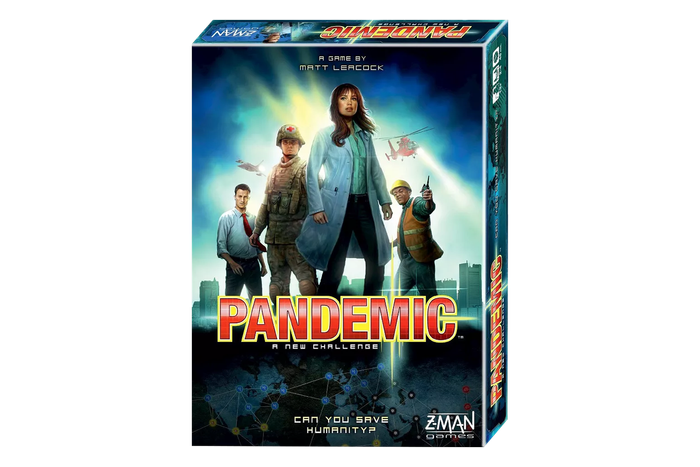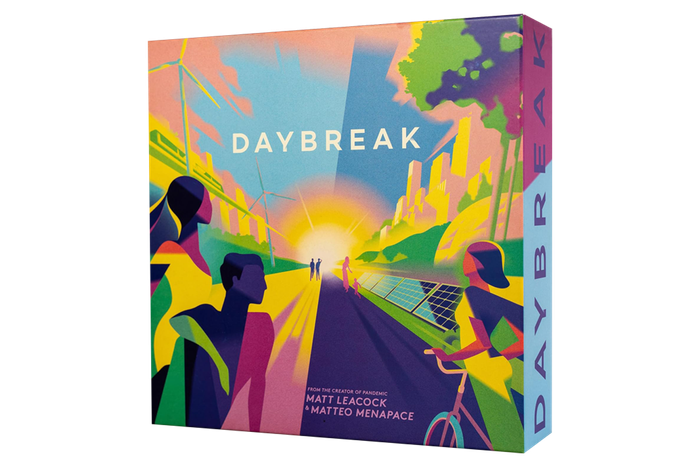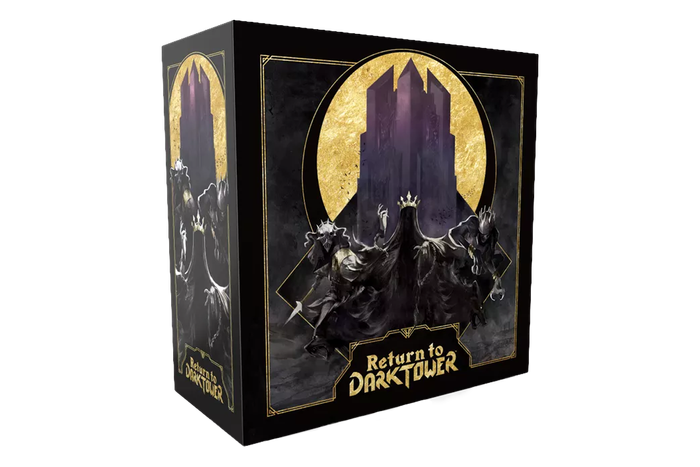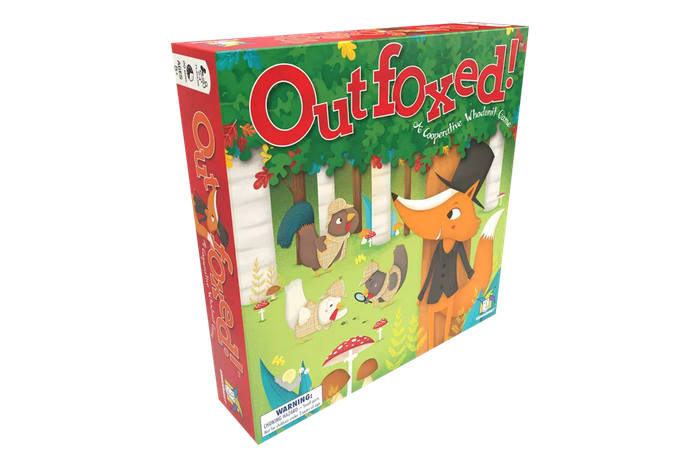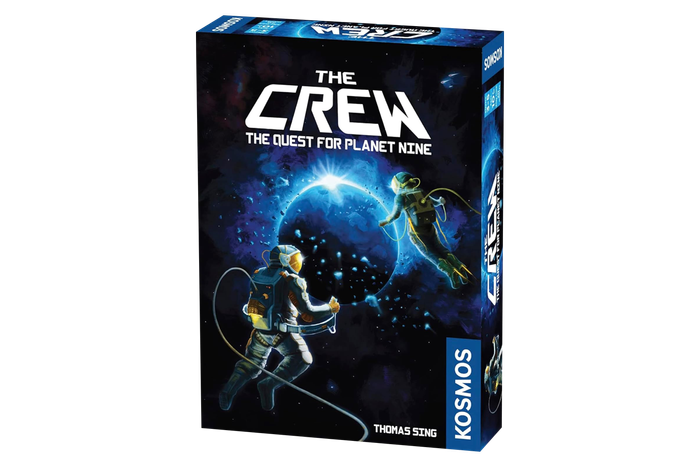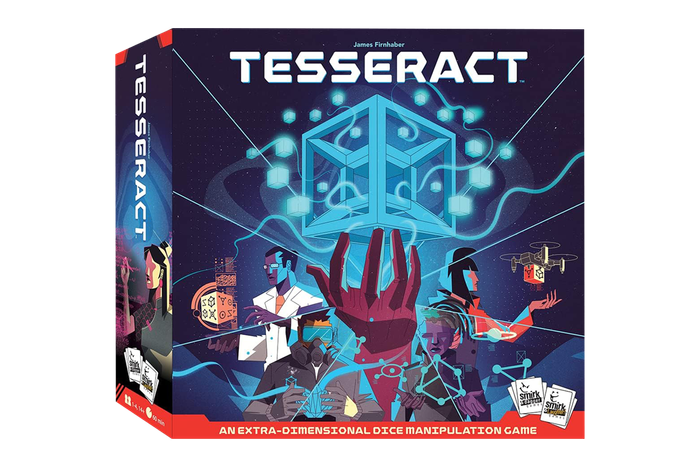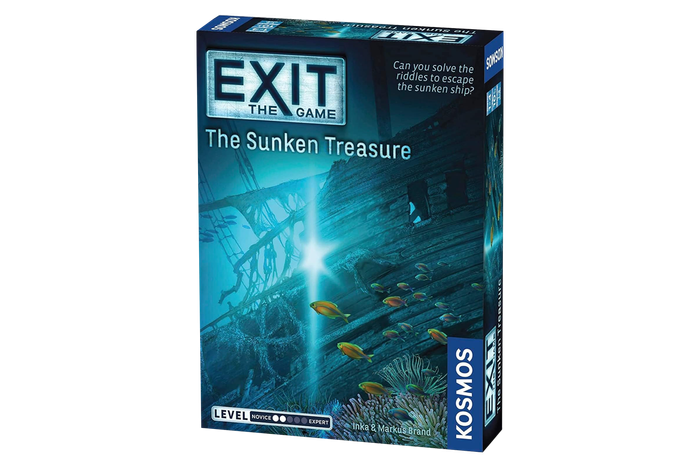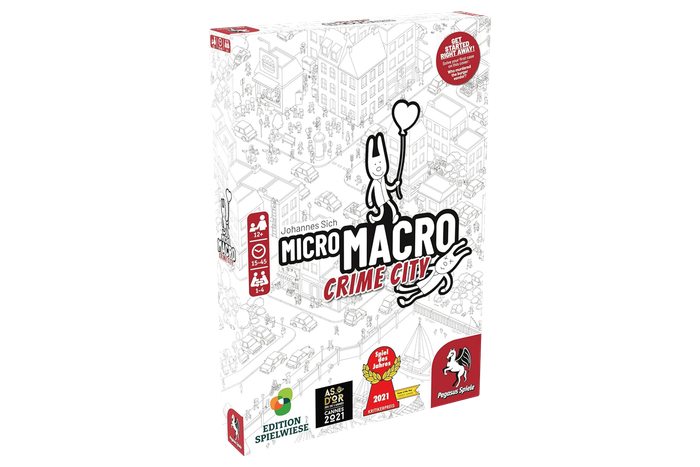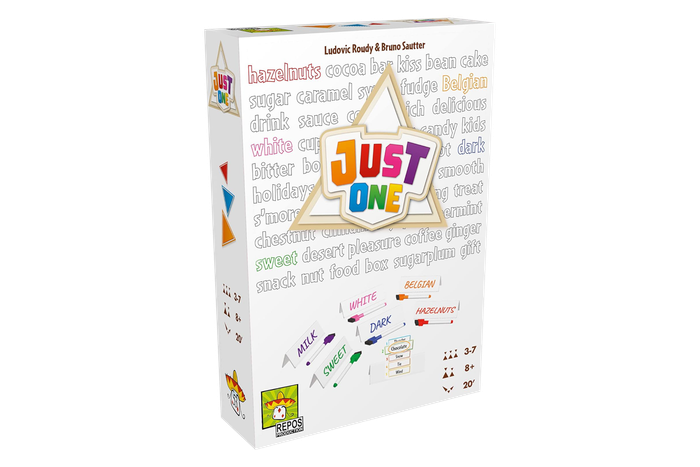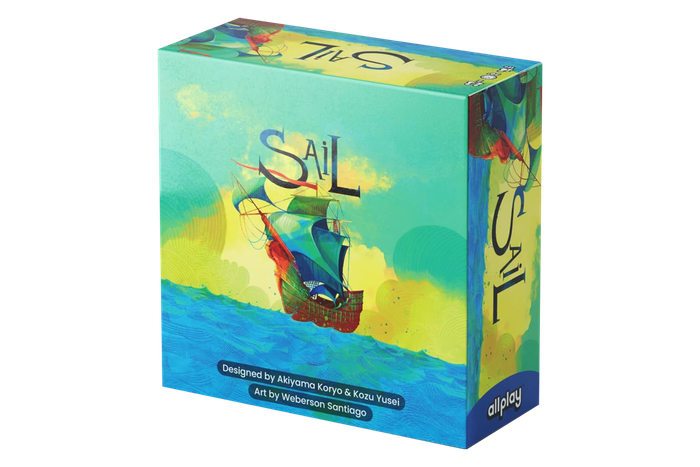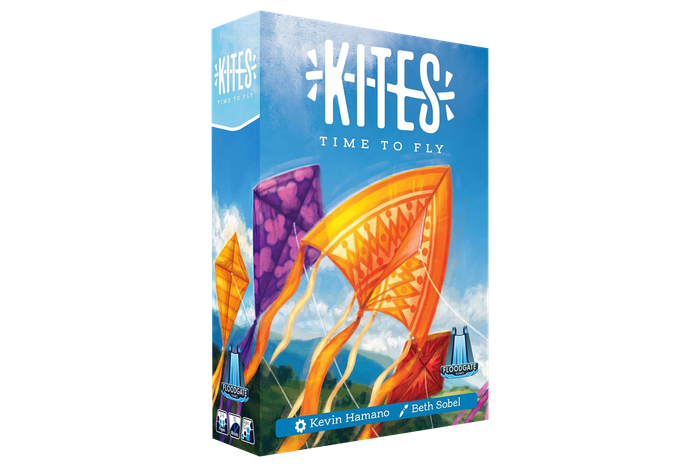
If youÔÇÖve played a board game at some point in your life, it was probably a competitive one ÔÇö you played for yourself, against other people, and your goal was to win, possibly with a dash of humiliation involved depending on your opponents. That frame of reference often makes cooperative gaming, a genre thatÔÇÖs having a moment with 2023 quite possibly the best year for new cooperative titles in the hobbyÔÇÖs history, seem rather strange to new players. ÔÇ£When I first played or heard about cooperative games, my reaction was one of polite disdain. What is the point if you arenÔÇÖt going to beat the other players,ÔÇØ says game designer Rob Daviau, whose co-op titles include Stranger Things: Upside Down and Pandemic: Legacy, a co-design with Matt Leacock. ÔÇ£But then I played a few and I got it. ThereÔÇÖs something uplifting, very Fellowship of the Ring, to band together to beat a game. It encourages discussion much more than competitive games.ÔÇØ
Leacock is obviously an advocate of cooperative games himself, as he designed the original Pandemic, which launched the still-going explosion in cooperative tabletop games and has spawned a slew of spinoffs and sequels. He notes that co-op games are ÔÇ£far easier to learn ÔÇö players donÔÇÖt have to have a complete understanding of every rule before they begin since their teammates can help out,ÔÇØ and that players often enjoy working on the same team, so ÔÇ£you get to experience all the positive emotions around collaborative problem solving and all rowing in the same direction.ÔÇØ
ÔÇ£Full disclosure: I am not a fan of cooperative tabletop games,ÔÇØ says Dr. Dave Eng, who writes about games and gaming at University XP. ÔÇ£But, I believe that the ÔÇÿsecret sauceÔÇÖ that makes cooperative games appealing to certain players is that they get a sense of teamwork, synergy, and ÔÇÿflowÔÇÖ from having really good communication and coordination from one another.ÔÇØ
Cooperative games have attracted more academic interest for the skills they can help players develop, particularly kids. Such games can help with social-emotional learning, an educational method aimed at helping kids develop self-awareness, interpersonal skills, and other social or emotional competencies necessary to succeed in life. A 1994 study of 4- and 5-year-olds found that cooperative games reduced aggressive behavior, while competitive games tended to increase it. Multiple studies in the last decade have found that cooperative play in video games reduced subsequent aggression in teenagers. Other studies have found that neurotic adults tend to dislike playing competitive games because of the negative emotions that come with losing or feeling embarrassed in front of others.
While the supply of cooperative games is surging along with demand, the genre itself dates back at least to the Great Depression. Crime author Dennis Wheatley and his friend J.G. Links produced what may have been the first modern cooperative games back in 1936 with a series of four murder-mystery games comprising ÔÇ£crime dossiersÔÇØ that asked players to work together to solve the mysteries. For the next half-century, though, cooperative games were almost exclusively for little kids, presumably because designers thought younger players wouldnÔÇÖt be able to handle losing. The idea of cooperation in board games didnÔÇÖt really take hold until the 1980s, with the original Sherlock Holmes: Consulting Detective game in 1982 (another solve-the-crime game) and the fantasy-themed game Wizards, which pioneered the idea of the players working against the game.
The modern explosion of cooperative games dates to the introduction of Pandemic in 2008, which opened the world of co-op titles beyond role-playing games and mysteries (plus a number of regrettable IP tie-in games). The original Arkham Horror game from 1987 was fairly well-received, as was the tie-in game for the 1989 movie Aliens, but prior to PandemicÔÇÖs release, you could count the number of decent cooperative board games on two hands and have a few fingers left over.
Today, weÔÇÖre awash in cooperative titles, as the success of Pandemic and LeacockÔÇÖs Forbidden games have encouraged other designers and publishers to jump in with their own cooperative designs, some borrowing from LeacockÔÇÖs mechanical framework, while others approach the design problem in entirely new ways. HereÔÇÖs a list of some of the best cooperative games IÔÇÖve played.
Some quick caveats: I excluded role-playing games or hybrids, like Gloomhaven or Warhammer Quest, and excluded games that are primarily for one player but offer a cooperative option. I have played 500-plus different board games, but I havenÔÇÖt played them all, and I apologize if your favorite co-op experience isnÔÇÖt on here.
Pandemic
This is the game that changed the game, so to speak. Pandemic showed there was a huge market for cooperative games, and it set up a basic set of mechanics that many other games have since adopted. YouÔÇÖre not just fighting one pandemic in this game, but four, spreading around the world from their initial outbreaks, and you must collect five cards in each diseaseÔÇÖs color and then turn them in at a research station to cure it, all while trying to stem the tide of the diseases as they spill over into other cities and cause further outbreaks. Players move their tokens around the map to get to where the diseases are spreading, but also to rendezvous with other players to exchange cards, or to reach those research stations. The game has spawned numerous expansions (I recommend On the Brink); spinoff games like Rising Tide, where youÔÇÖre fighting the floodwaters in the Netherlands rather than diseases; Pandemic Legacy, where you play through a series of 12 scenarios and alter the gameÔÇÖs components each time you play; and shorter versions called Pandemic Hot Zone. You can also find the same general mechanics in Matt LeacockÔÇÖs Forbidden games, led by Forbidden Island and Forbidden Desert, and his delightful cooperative game for ages 5+, Mole Rats in Space.
Daybreak
LeacockÔÇÖs latest game deserves a separate mention, as it doesnÔÇÖt share the core mechanics of Pandemic. ItÔÇÖs a cooperative game about fighting climate change, co-designed with Matteo Menapace, with entirely renewable components in the box ÔÇô no plastic whatsoever. Players take on different regions of the globe who are faced with different challenges; the U.S. has plenty of energy and can afford to be greener, although right now they produce too much carbon, while the developing worldÔÇÖs energy needs will soar over the game and they donÔÇÖt have the resources to just flip from dirty energy to clean. Players have six rounds to get to net zero, while also fighting various climate change-induced crises that pop up each turn. ItÔÇÖs a gorgeous game on the table and highly replayable, not to mention a ray of hope compared to the head-in-the-sand approach taken by too much of the planet in reality.
Return to Dark Tower
Dark Tower was a cult classic game from 1981, produced for just one year at great expense by Milton Bradley as the company tried to steal some market share from Dungeons & Dragons. They even hired Orson Wells to voice their commercials! The game was expensive to make, with an electronic tower that beeped and booped and, as often as not, broke, so for forty years it was a collectorÔÇÖs item. Restoration Games redesigned it from the ground up and brought it back to the market in 2022, with a sophisticated electronic tower that makes menacing noises and the occasional beep and boop too. Players are adventurers trying to complete a main quest, collecting certain items or vanquishing foes, before they meet the final boss for their scenario. As you play, the game board around the tower gets more and more clogged with monsters, and the buildings on it can take damage and ultimately be destroyed by the corruption creeping across the land. After every playerÔÇÖs turn, you drop a little skull into the top of the tower, which senses it and, through the gameÔÇÖs stellar companion app, gives you several events ÔÇô usually bad ÔÇô that take place on the board before the next turn. It has a high fantasy setting like D&D, but none of the trappings of role-playing games such as character creation that take up a lot of time at the table. ItÔÇÖs stunning to look at, and a blast to play, even if youÔÇÖre not old enough to remember the original.
Outfoxed!
A cooperative title for the little gamers in your house, Outfoxed! is great for kids 4 and up, mixing a little deduction with a silly theme. Mrs. PlumpertÔÇÖs pie has been stolen, and it was one of the sly foxes always skulking around the coop, so itÔÇÖs up to the chicken-detectives to solve the case before the fox gets away. On each turn, a player rolls the three dice up to three times to try to gain three footprint symbols to move to a clue location, or three eye symbols to reveal one suspect. If you arenÔÇÖt successful by the third roll, the fox moves three spaces towards its foxhole. You have to figure out which fox is the culprit by their clothes and accessories; players can either deduce it and guess it outright, or eliminate all suspects but one. If the fox reaches the foxhole first, though, the players lose! ThereÔÇÖs no text in the game, so itÔÇÖs great even for kids who arenÔÇÖt reading yet.
The Crew
The Crew is actually two games, the original The Crew: The Quest for Planet Nine, and its sequel, The Crew: Mission Deep Sea. Both work the same way, as cooperative trick-takers, with each game providing a book with a list of ÔÇ£missionsÔÇØ to work through, ranging from simple ones like winning just one or two tricks with specific colors or cards to harder challenges like having at least one trick won by a card of value 1, ensuring one specific player wins zero tricks, or having players win tricks in a specific order. Each game comes with a log book of 50 missions, increasing in difficulty and complexity. (One of my quibbles with both games is that its rules are so antithetical to traditional trick-taking games that experienced bridge players and the like have a hard time shifting their mindset to fit this game.)
Chronicles of Crime
If thereÔÇÖs a modern-day descendant of the Sherlock Holmes: Consulting Detective game, this is it. (There is, however, a new series of SH:CD games, with the first released in 2016, but I didnÔÇÖt care for the writing or the way the mysteries were crafted.) Chronicles of Crime takes place as much in its companion app as it does on the table, with a VR-lite experience that lets you examine a room by holding up your phone and moving it around as if youÔÇÖre looking at the four walls, the ceiling, and the floor. Each case comes with a set of cards, each with a QR code you can scan that will give you a clue or a direction in the app, and the digital aspect means that the story can shift as youÔÇÖre playing, such as characters changing locations by the time of day in the story. The original game is set in the present time, while subsequent editions are set in 1900, 1400, and 2400.
Tesseract
One of the newest entries on the list, Tesseract has a unique theme and some different mechanics to set itself apart from the typical cooperative tabletop game. A mysterious entity, the Tesseract (a four-dimensional ÔÇÿcubeÔÇÖ), has appeared in our universe, and your team of scientists must stabilize it before it collapses all of space-time into a singularity. The tesseract here has just three dimensions, which strikes me as a bit of a cop-out, really, represented by a cube of 64 dice in varying colors. Players must collect sets of cubes of the same color or the same face value to neutralize them, placing one die from each set on the shared board of 24 spaces, one for each color/value combination, that they must fill out completely before the tesseract sheds too many dice, destabilizing the universe.
EXIT: the Game
The EXIT games are a whole series of single-use games, literally, as you will deface and destroy the game as you play it. (Everything is recyclable, except the occasional tiny bit of plastic.) Many games have tried to bring the escape room concept to the tabletop, but these games do the best job by far. Players will work through a series of puzzles using only whatÔÇÖs in the box ÔÇö sometimes including the box itself ÔÇö looking for hidden clues to find a three-digit code they can put into the gameÔÇÖs clue wheel, which will tell them which card to pull out of the deck next. The games are supposed to be solvable within an hour, although I think that varies by title, and the timer is kind of superfluous anyway ÔÇô you play to win the game. You donÔÇÖt play to just play it.
MicroMacro Crime City
This is also a series of games, although each box contains 16 ÔÇÿcasesÔÇÖ for players to solve. It comes with a giant black-and-white cartoon map of the titular city, where people do crimes, and you need to solve them. Each case has a set of cards asking you to solve a particular part of the mystery, which you do by looking at the map, finding the character(s) or building in question, and then working your way backwards ÔÇô the map is a sort of time-lapse image of the city, so you can follow a thief or a murderer or a victim over multiple steps to try to solve the case. Despite the cartoon imagery, itÔÇÖs not for kids, as there are cartoon murders and lots of illicit, two-dimensional substances in use.
Just One
A rarity among cooperative titles, Just One is a party game for 3 to 7 players, with one player serving as the guesser in each turn while all other players give a one-word clue ÔÇô but if any two players submit the same clue, itÔÇÖs erased before the guesser gets to see it. You play through a hand of 13 cards, each of which has 5 words on it; the guesser places the card in front of them with the words facing all other players, picks a number from one to five, and then each clue-giver has to write a single word on their little dry-erase board. The givers compare clues to see if there are any duplicates, erasing those, and then the guesser has just one shot to get the answer. If they get it right, you score a point for that card; if they get it wrong, you lose that card and discard the next one; they can also pass, and just discard that card. The goal is to get as many points as you can, up to 13, but the fun is in the playing rather than the scoring.
Sky Team
The 2023 game release slate brought us two great cooperative games that are strictly for two players, Sky Team and Sail. Sky Team has two players posing as pilot and co-pilot, trying to bring their big olÔÇÖ jet airliner in for a landing at a major world airport, which means getting all sorts of things ready so the runway is clear and you approach at the right speed and angle. You do this with dice, rolling your set before each round and alternating placing them on your side of the board. The easiest airports just want you to move other planes off the runway, get your landing gear and brakes ready, and make sure youÔÇÖre level and moving slowly enough to land safely. More difficult challenges require you to manage your fuel, train an intern, deal with wind, land on an icy runway, and more. Oh, and if you donÔÇÖt like the results of the die rolls, you can change them with the worldÔÇÖs most magical potion: Coffee.
Sail
Sail is a trick-taking game for two players with great artwork and a simple know-your-partner theme at its heart. A re-theme of a Japanese game called Hameln Cave, Sail takes place over a series of scenarios where the players try to use their cards to guide their ship across the map to the end space, avoiding rocks and the Kraken while trying not to take too much damage. The deck has three suits and cards numbered 1 through 9, with each number bearing a specific symbol or set of symbols that might trigger an action depending on what your partner plays. You want to play the right combinations to keep moving the ship and prevent the Kraken from sinking you, and you donÔÇÖt want to win too many tricks yourself because that makes the round end sooner, depriving you of a few more turns to move the ship. The scenarios seem very well calibrated to ensure that if you win, itÔÇÖs by the skin of your sea-monster teeth.
Kites
Kites is a real-time cooperative game where players will play cards from their hands to keep flipping a set of sand timers and prevent any from running out before they exhaust all of the cards in the deck. There are six timers in different colors, each with a different quantity of sand in it. The deck has cards showing one or two colors on them, and when your turn comes up, you must play a card from your hand, flipping the timer(s) shown on your card, or flipping the white timer, which has no cards in the deck but can be flipped with any single-color card. When youÔÇÖve finished the deck, you keep going until youÔÇÖve played all of your cards ÔÇô but you can no longer flip the white timer for the remainder of the game. ItÔÇÖs been such a hit itÔÇÖs inspired numerous knockoffs, and now has a harder sequel game called Skyrockets.
The Mind
The Mind seems to have such a simple concept ÔÇô the players shuffle the deck of cards numbered 1 through 100, deal a number of cards to each player equal to the current round, and then try to play their hands to the table in ascending numerical order without speaking or communicating in any way. You do this over a series of rounds, with more rounds for two players than for four. The players begin with a number of lives equal to the number of players, and you lose a life any time a player places a card out of order (e.g., you play the 56 when I have the 55 still in my hand). ItÔÇÖs very, very hard to win, but incredibly fun to lose.
Honorable mentions: Spirit Island, Horrified, Burgle Bros., Set a Watch, Miller Zoo, Stranger Things, The Spill, Dice Conquest


